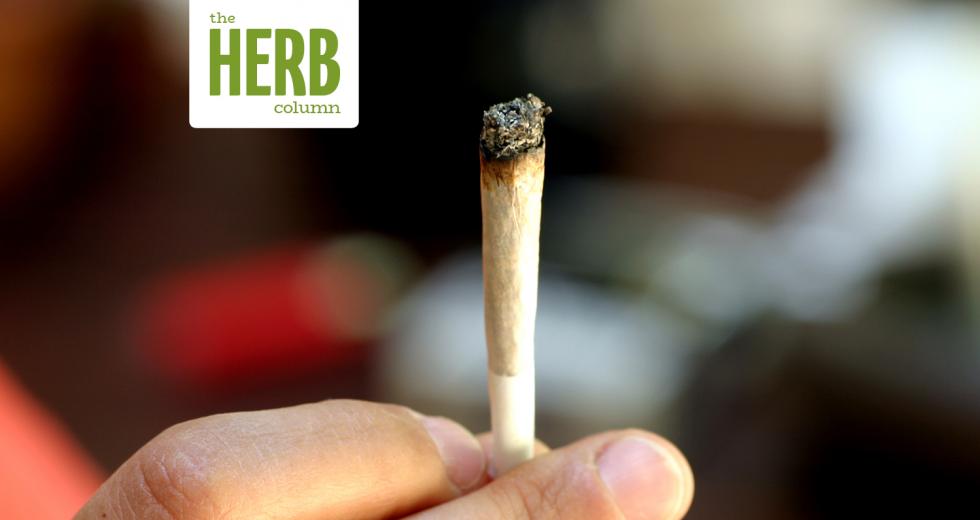For proponents of legal cannabis, Prop. 64 will forever be a landmark. But another ballot measure — Prop. 65, passed 30 years earlier in 1986 — gets almost no attention, although it also affects state government’s approach to cannabis.
That measure restricted toxic discharges into drinking water and has ever since required the State of California to publish lists of chemicals “known to the State to cause cancer or reproductive toxicity.”
On the list as a cancer risk: marijuana smoke. Before a chemical gets added, the state’s Office of Environmental Health Hazard Assessment reviews existing research studies and toxicology reports and then does an evaluation and risk assessment. “There’s a lot that goes into it,” says Pamela Murcell, president of the Sacramento Valley section of the California Industrial Hygiene Council, which monitors occupational and environmental health issues.
The permitting of onsite cannabis consumption may well come before the Sacramento City Council sometime this year. Last May, Councilman Jay Schenirer said it would be considered within six months, but that didn’t happen. (Schenirer and city cannabis czar Joseph Devlin didn’t respond to requests for comment.) If this year it does, the council may find itself navigating a narrow passage between creating places for people to legally use and protecting workers. That discussion will also be a focus for advocates as the state starts writing its final regulation on the issue.
Under California’s 2017 cannabis law, public consumption is illegal, but localities can permit onsite use as long as a few conditions are met. At last count, five cities — San Francisco, West Hollywood, Oakland, Alameda and Palm Springs — had done so.
For many people in other cities like Sacramento that allow cannabis sales but not onsite use, it’s as if Prop. 64 never happened. That’s because with public consumption illegal, renters have few options: tenants in public housing can be removed even for medical use, and many private landlords forbid it as part of a lease. (Many landlords also forbid cigarette smoking.) In theory, using in your car might pass muster if it’s parked in a private garage. “For a lot of renters, they’re discriminated against — they can’t consume onsite [at a dispensary], so they either have to improvise or they have to violate their lease,” says Daniel Conway, a cannabis entrepreneur based in Sacramento.
Whatever happens in Sacramento, the State is about to take up the onsite smoking issue. Its Division of Occupational Safety and Health, known as Cal/OSHA, will hold the first meeting to get public comments on new rules sometime this year, the first step in a process that will take “a couple of years,” says Eric Berg, the agency’s deputy chief of research and standards.
The regulations the agency is proposing will operate similarly to those governing tobacco smokers’ lounges. Under those, tobacco smokers’ lounges that are attached to or located inside tobacco shops are exempt from the state law that bans workplace smoking. Under the proposed regulations, cannabis smokers’ lounges attached to or inside cannabis dispensaries would be similarly exempt.
Murcell says her organization supports that proposal. But workplace safety advocates likely will push for more stringent regulation. Jora Trang, managing attorney at the Oakland-based worker safety nonprofit Worksafe, says her organization wouldn’t block that compromise and needs to look more closely at the research. But the industry should have to do whatever is needed to keep employees safe, whether through robust ventilation or having workers wear respiratory masks, she says.
What would masks do to the chill vibe of a pot lounge? People will get used to them, she says. “Over time, as we raise awareness of consumers, you will find if you go into a nail salon that there are ventilation systems and there are workers wearing masks, … consumers [won’t feel] like something weird is going on,” she says. (Ventilation and masks are required in New York State, for example.)
Another group, the Berkeley-based Americans Nonsmokers’ Rights Foundation, takes a harder line. ANRF sent a letter last August to Cal/OSHA asserting that to protect employee health, they oppose allowing marijuana smoking and vaping in all cannabis establishments.
On the other side are cannabis lounges that already have permits in one of the cities where smoking is allowed. At a meeting in January 2018 with Cal/OSHA, some of them said they want cannabis exempted from the rule altogether because they claim to already ensure worker safety with HVAC systems, carbon filters, negative ion generators and the like. An attorney representing cannabis smoking lounges argued that no regulations should be issued unless harm could be demonstrated.
Another option is tighter rules on interior construction. The regulations that San Francisco adopted require that cannabis smoking rooms be completely separated from the rest of the premises with self-closing, tightly sealed doors. Owners are forbidden from asking employees to enter those rooms as part of their jobs. (Employees can be asked to enter after hours when the room isn’t in use, says a spokesperson for the city’s Department of Public Health.) Trang calls San Francisco’s rules “interesting” but doesn’t trust that workers would feel free to say no.
Alaska became the first state to allow onsite consumption in December 2018. Lounges there, as in San Francisco, must create a completely sealed room but also build a smoke-free area where workers can monitor the smoking room without actually breathing the air.
One other fact seems clear: The state’s ban on lighting up on public property ratchets up the pressure to legalize indoor smoking. “If you can’t consume in public, you have to have places where people can consume, or it doesn’t work very well,” state Bureau of Cannabis Control Chief Lori Ajax told an audience at a cannabis business conference.
There’s precedent for change on that front too: Last fall, even before Canada legalized pot, Ontario’s governing party also legalized public toking.



